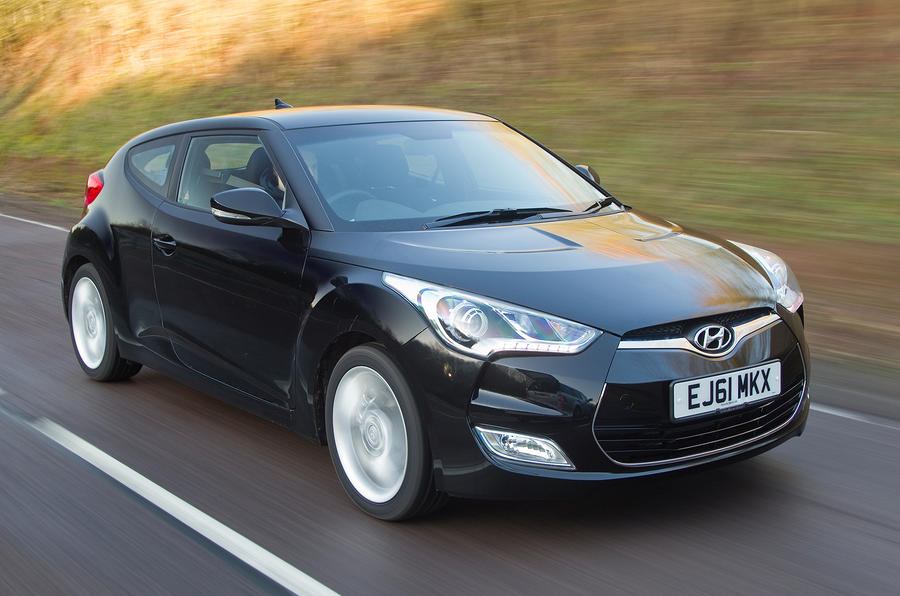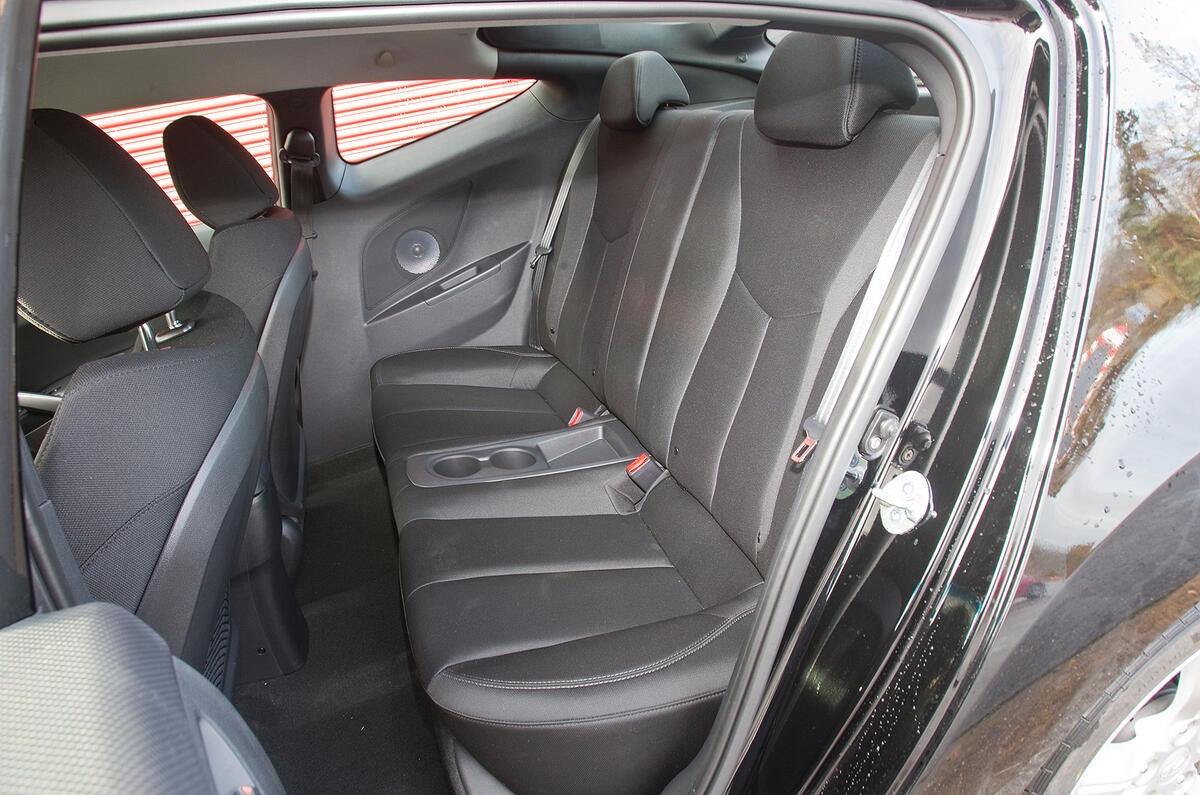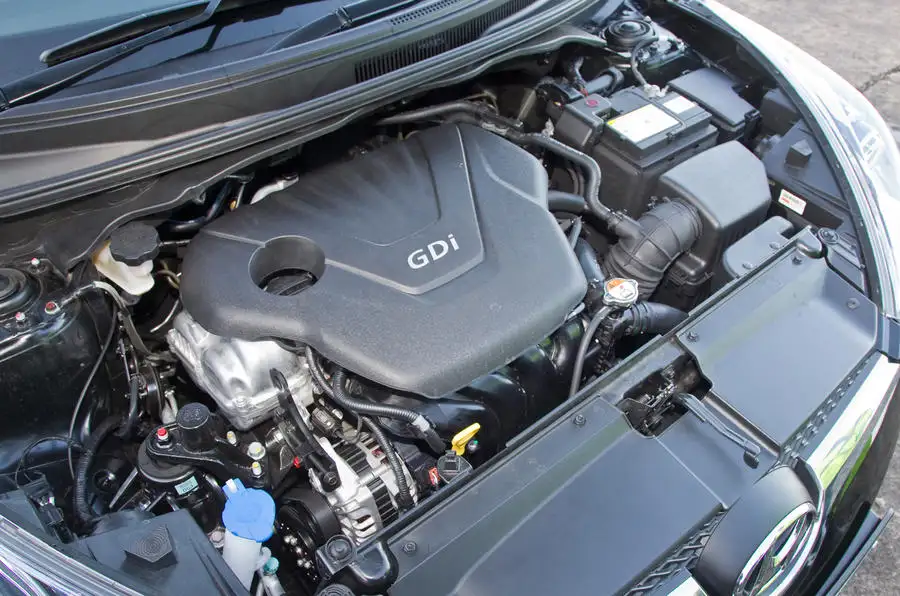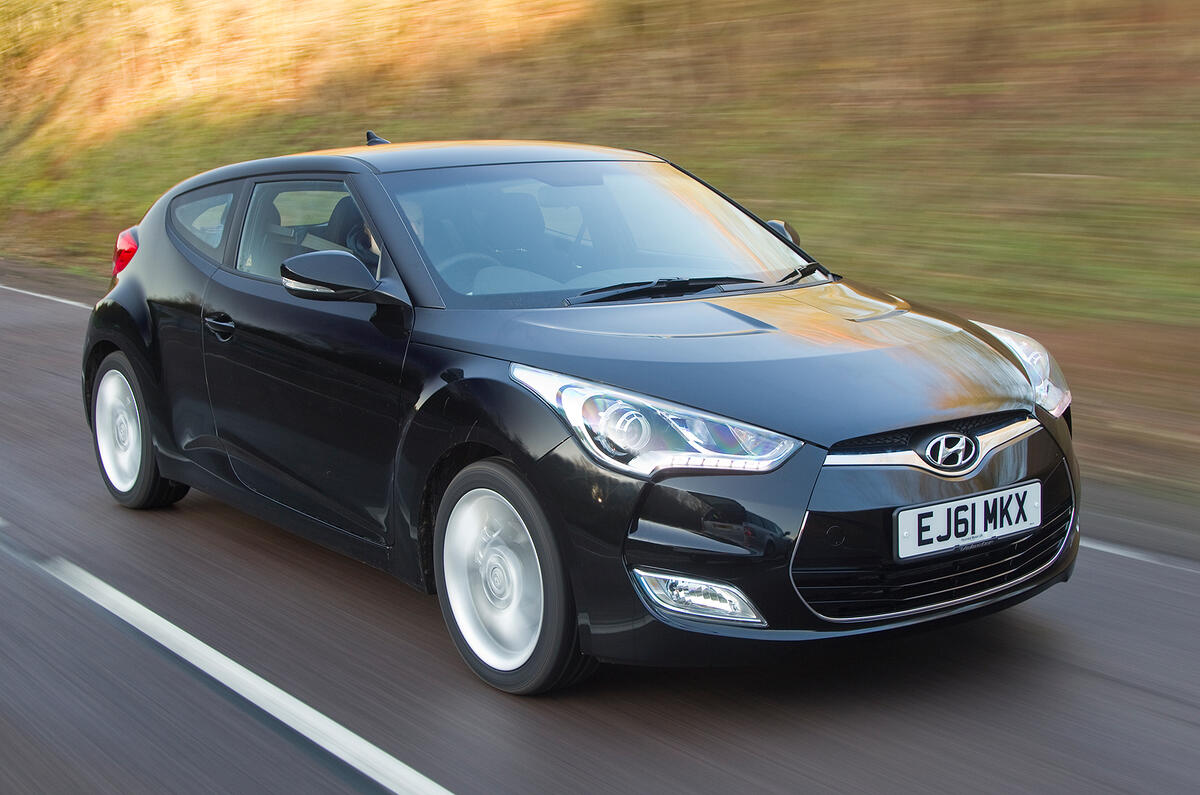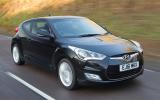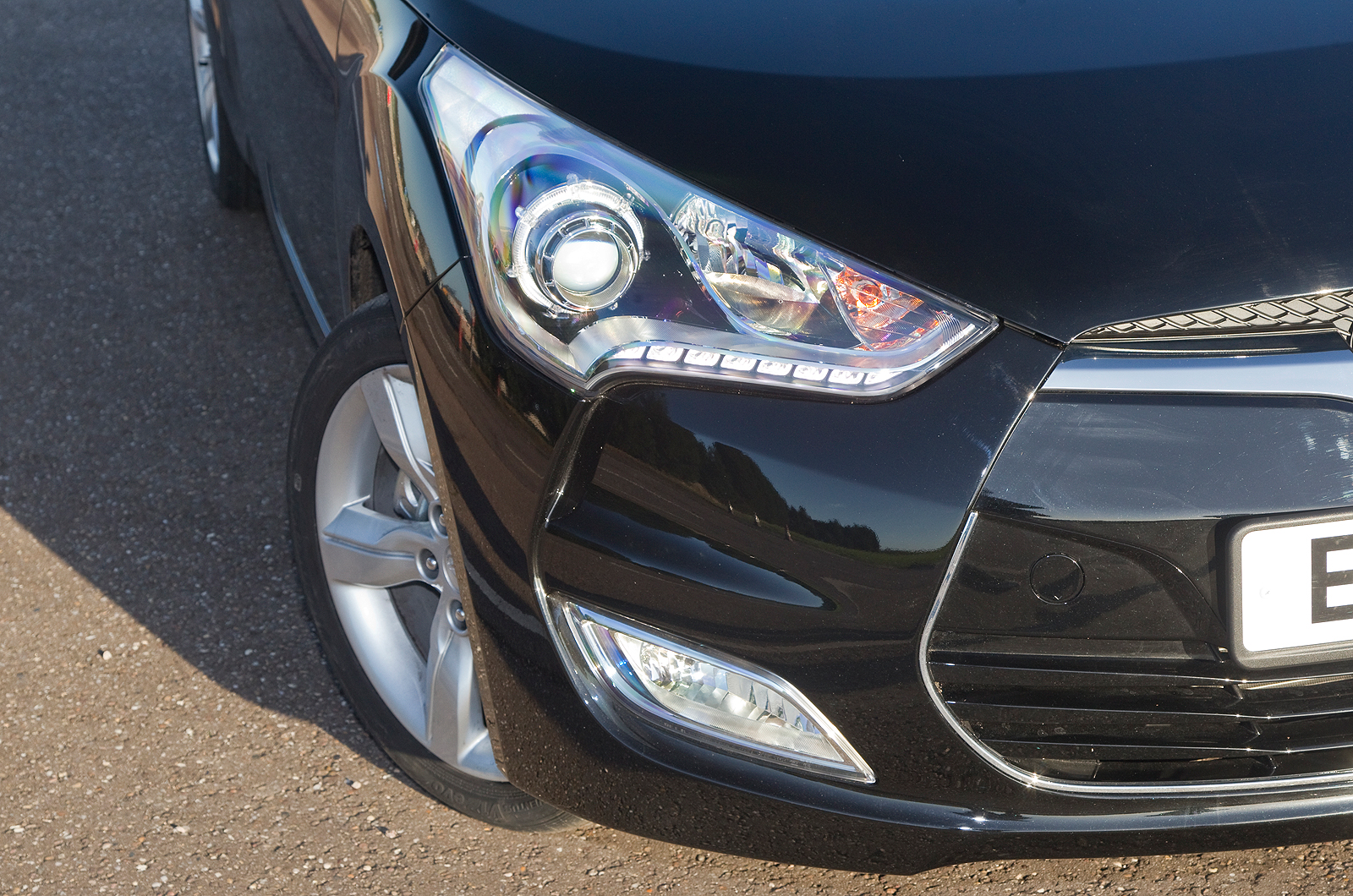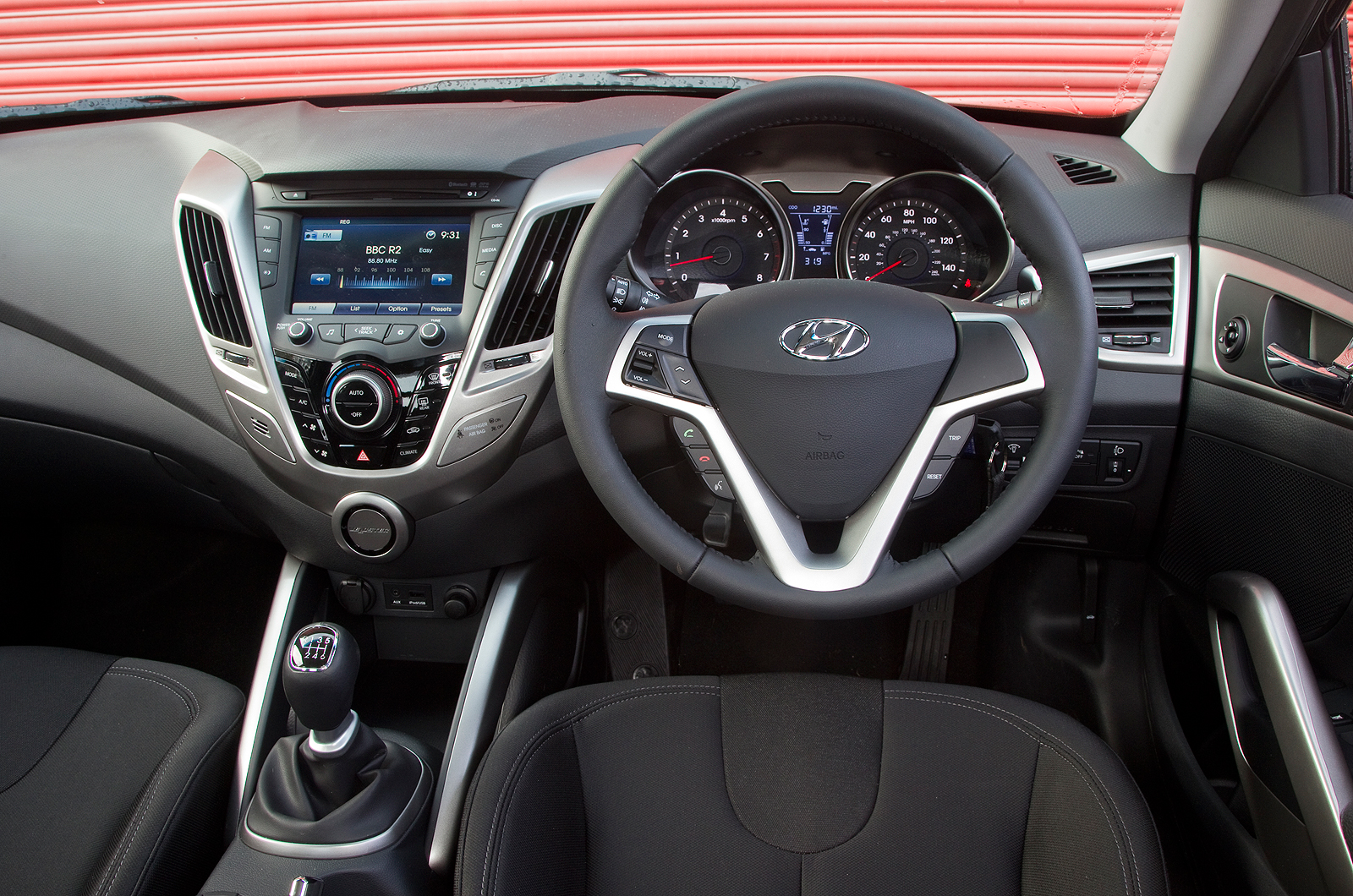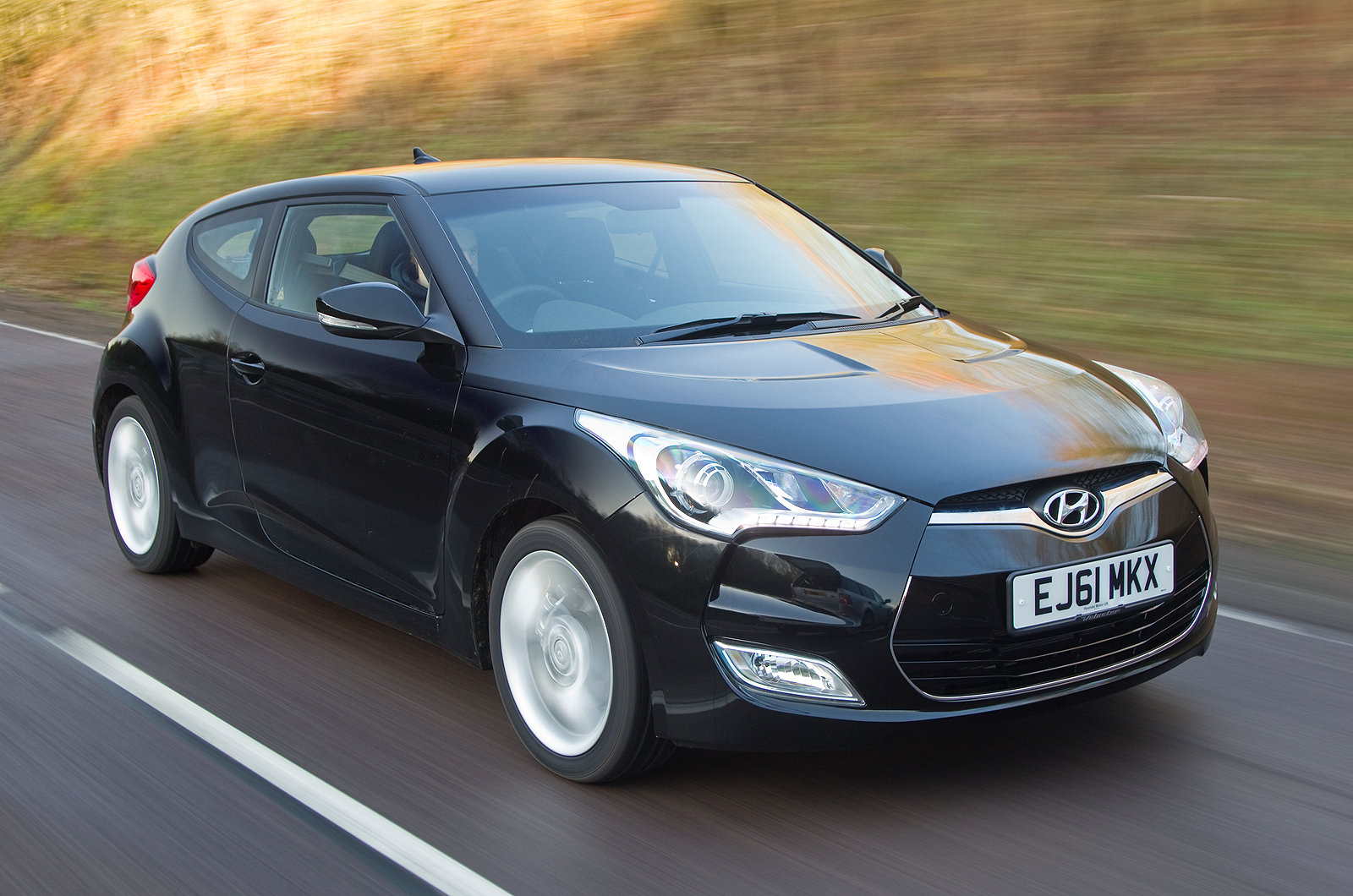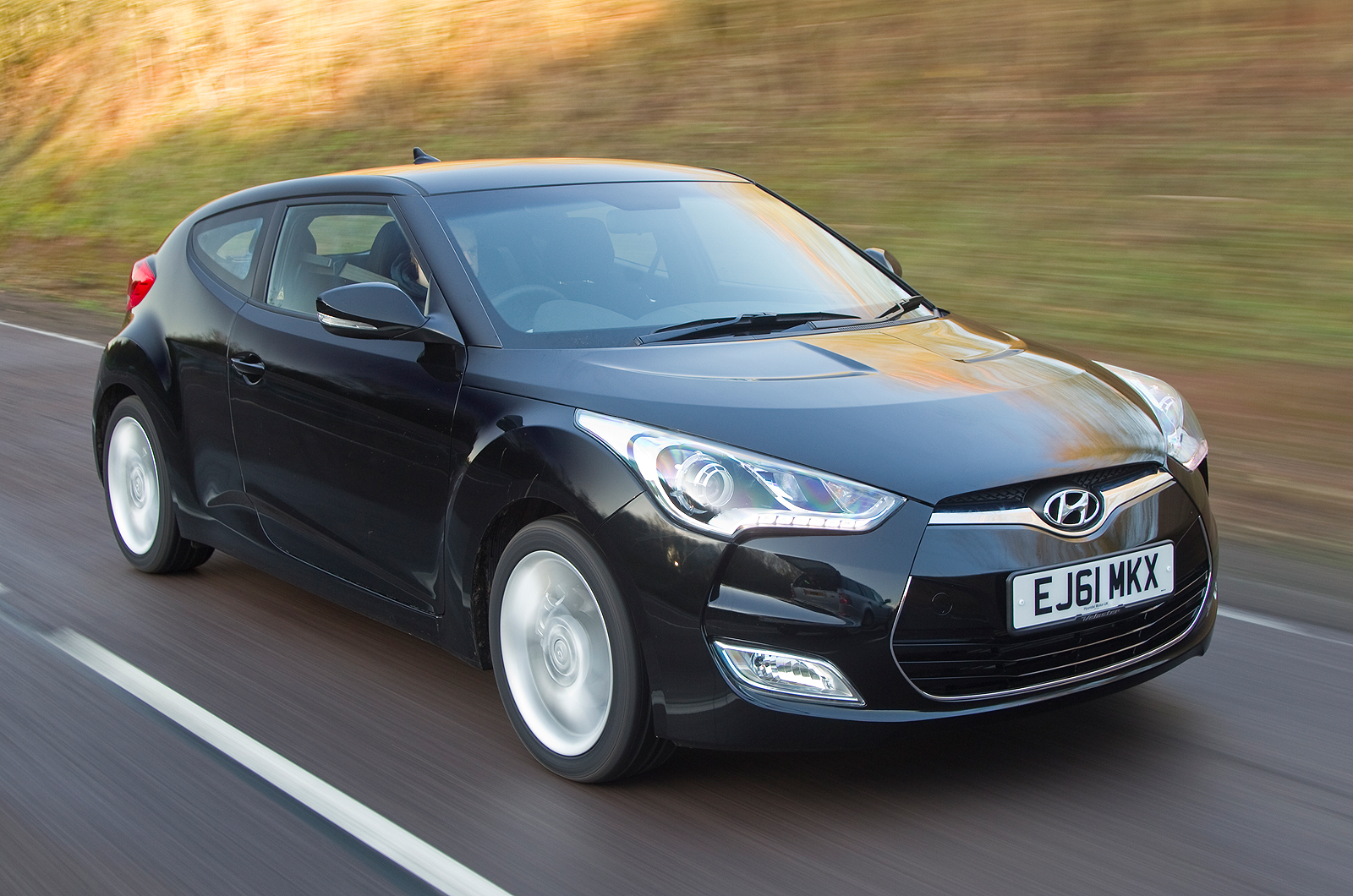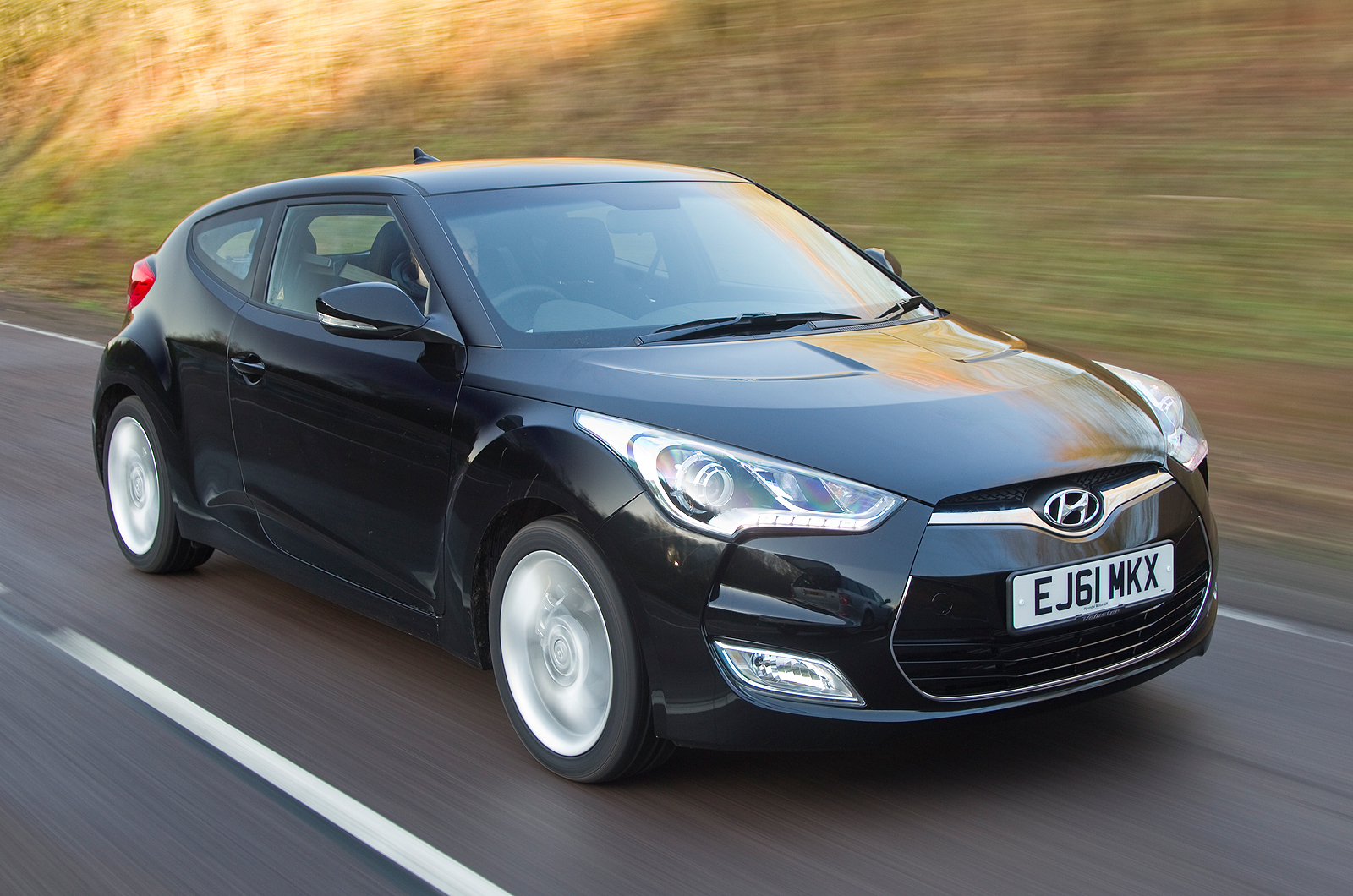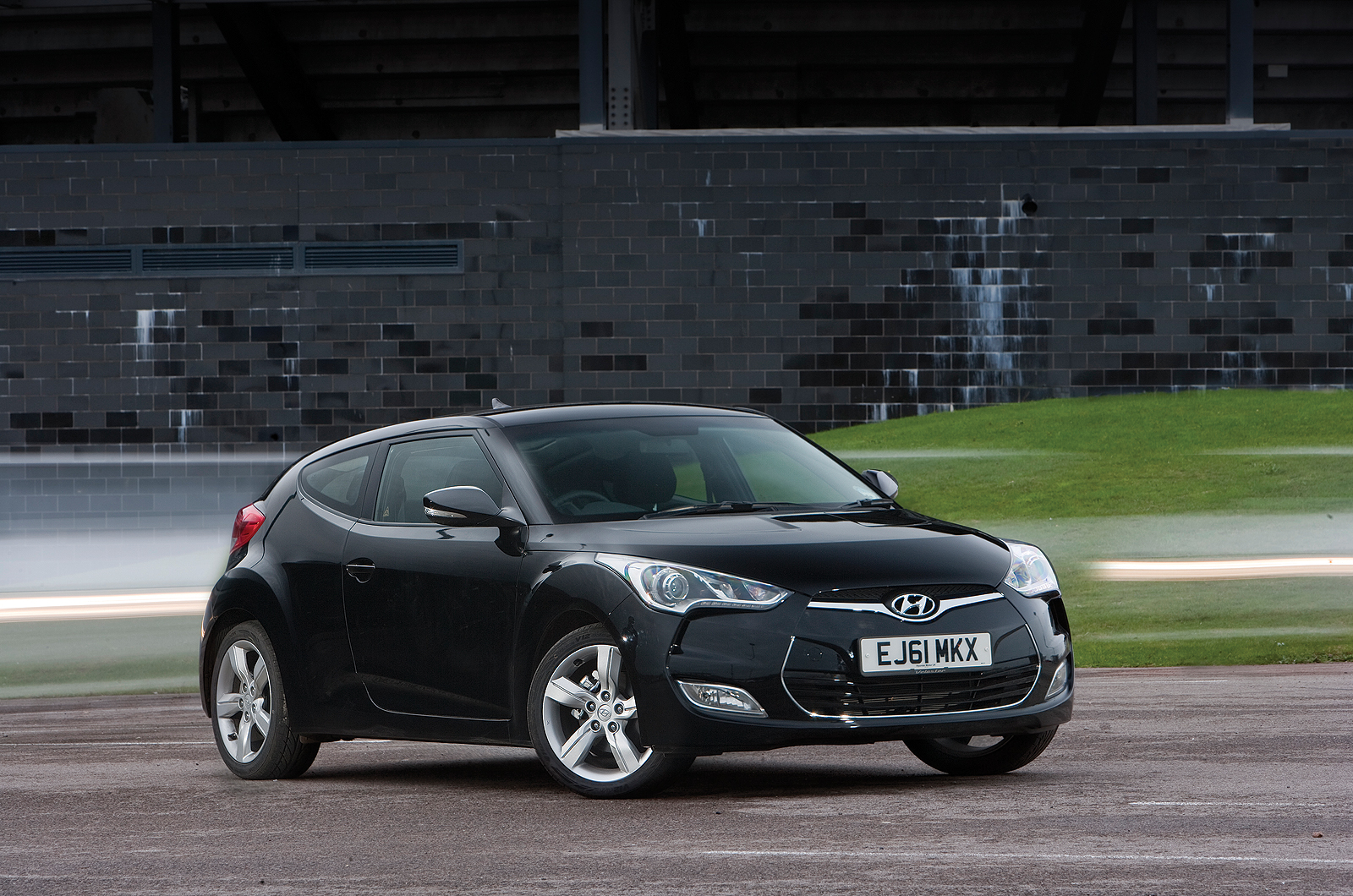The past few years have seen a growing fashion for manufacturers to blur established class distinctions with cleverly repackaged cars, but most are comparatively conservative next to the assuredly left field Hyundai Veloster.
An asymmetrically doored model would have been a measure of the brand’s burgeoning confidence in any segment, but the fact that this one-plus-two-door car has emerged as a halo-wearing three-door coupé signals just how far the Korean firm has come in the UK since the scrappage scheme sent its i10 city car into the stratosphere.
Hyundai claims the Veloster’s single nearside rear door means it straddles two segments and offers hatchback-like practicality in the sharp-suited body of a coupé. In truth, it’s an unorthodox broadside at conventional two-door rivals from Volkswagen, Vauxhall and Renault.
The quirky Veloster will need to earn its buyers from established competition in a market it has not contested since the Hyundai Coupé disappeared from this country three years ago. One thing that’s certainly in its favour is its price, with most versions costing less than £20,000.
There are now two engine options for prospective Veloster buyers: Hyundai's naturally aspirated 1.6-litre GDI engine and turbocharged version of the same. The latter offers 184bhp and 195lb ft, up from the standard car's 138bhp and 123lb ft. The Turbo has a 0-62mph time of 8.4sec, against the naturally aspirated manual model’s 9.7sec.


